AEROSPACE Celera 500L
Going with the flow
Can Otto Aviation’s unconventionally-shaped Celera 500L deliver radical gains in efficiency and operational costs due to its innovative laminar flow drag-reducing shape? BILL READ FRAeS investigates.
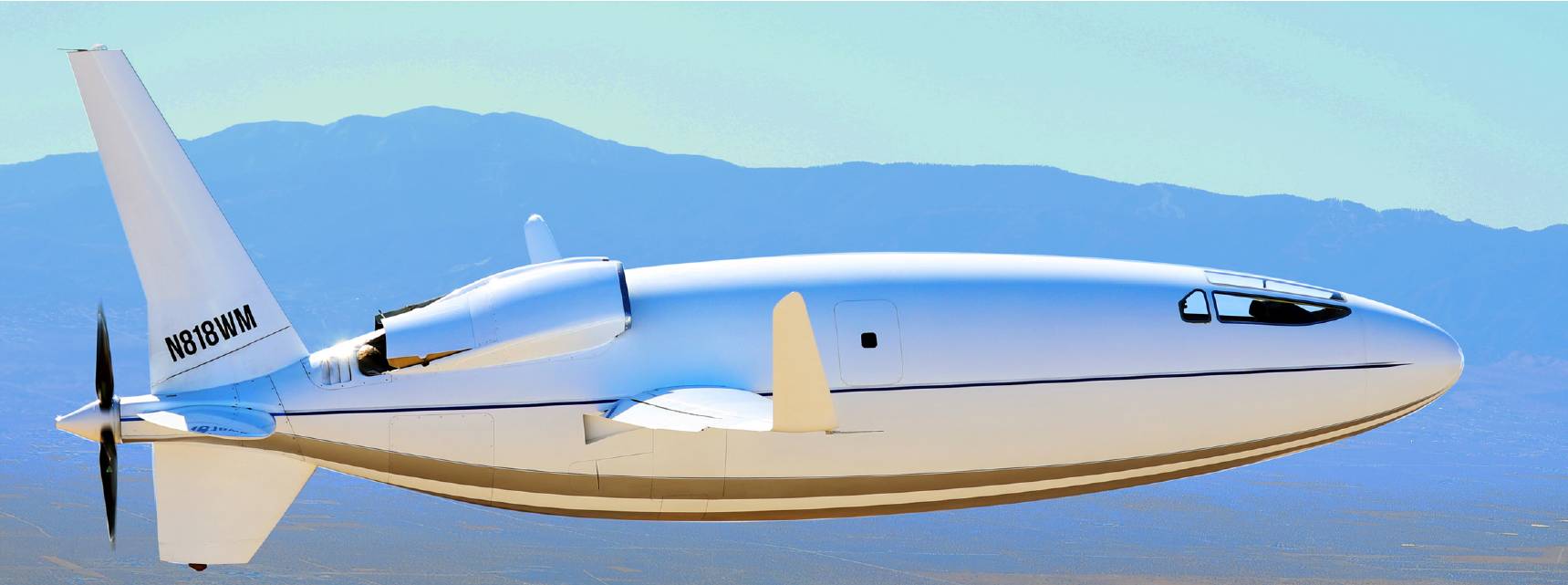 The prototype Celera 500L in flight.
The prototype Celera 500L in flight. In January 2018, Californian start-up company Otto Aviation made the first flight of a new unconventionally-shaped prototype aircraft, the Celera 500L. Developed by aircraft and rocket designer William Otto, the pusher-propeller Celera 500L is deliberately designed to achieve a smooth laminar flow in flight. The company is claiming that this aerodynamically efficient design can achieve radical improvements in speed, range, fuel savings and operating costs.
The Celera 500L defies the conventional shape of an aircraft in several ways, the most obvious of which is its short egg-shaped fuselage. The aircraft also features thin straight wings with winglets, a tailplane which is straight at the leading edge and curved at the trailing edge and a long narrow vertical stabiliser which extends both above and below the aircraft. The very thin wings do not contain fuel tanks but are fitted with an electrically powered de-icing system already certified on other FAR part 23 aircraft. Each wing is also fitted with a pitot tube towards the wing tip where the drag penalty is minimal.
The prototype Celera 500L is fitted with mechanically-linked controls. Aircraft designer Bill Otto told AEROSPACE that the reason for using such controls for the baseline configuration was to reduce complexity and overall programme risk. “We are considering fly-by-wire flight controls as part of a roadmap to autonomy for freight and military applications,” he explained.
To maintain the fuselage shape, the cockpit windows in the Celera 500L are very elongated – a design feature which some commentators are concerned might lead to pilot visibility problems when landing and might require the fitting of external cameras to assist with downward vision. However, Otto said that synthetic vision will only be a non-flight critical system on the aircraft. “Vision from the cockpit is as good or better than comparable aircraft. Line of sight studies ensure the pilot has great visibility, including landing at a near-flat attitude.”
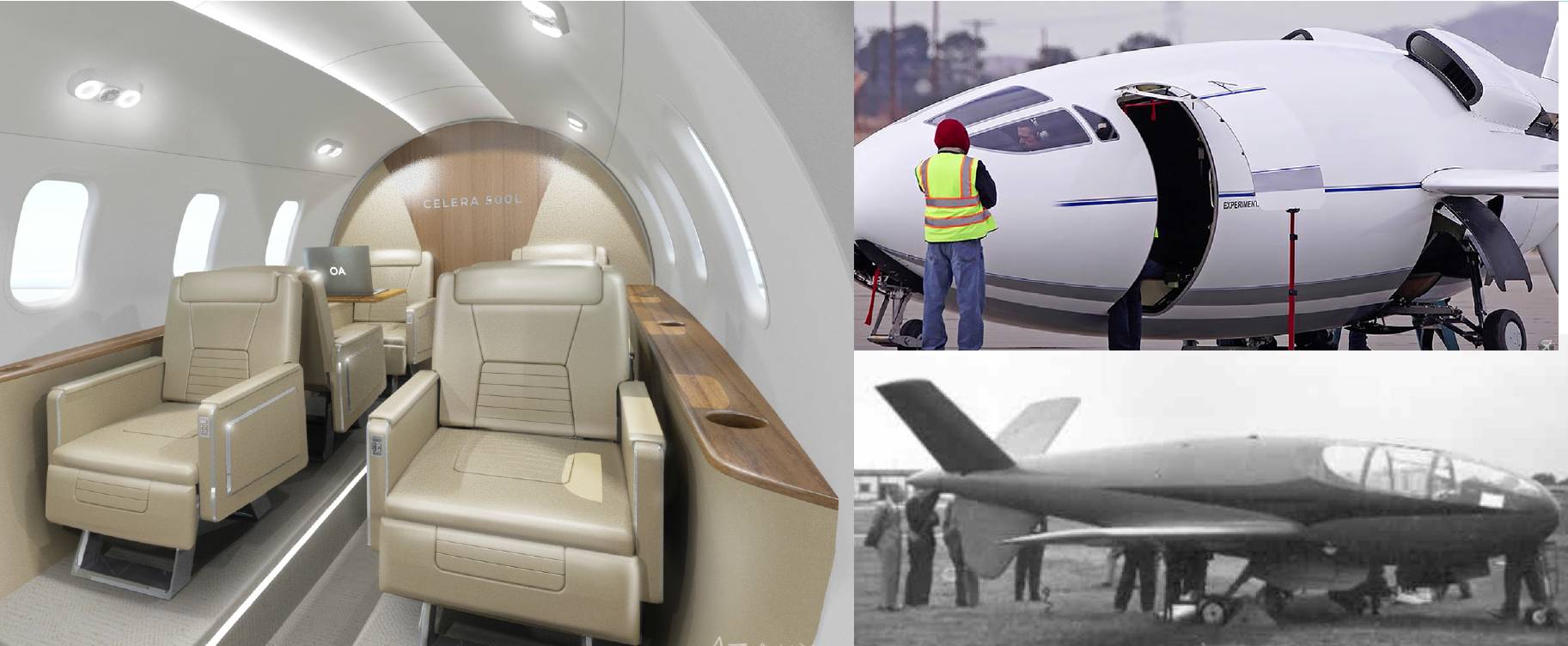 Left: The unique shape of the Celera 500L fuselage will enable the inclusion of a wider cabin than equivalent-sized aircraft. Right top: The prototype Celera 500L on the ground. Right bottom: Déjà vu? The British Planet Satellite design at the 1948 Farnborough Airshow. Wikipedia
Left: The unique shape of the Celera 500L fuselage will enable the inclusion of a wider cabin than equivalent-sized aircraft. Right top: The prototype Celera 500L on the ground. Right bottom: Déjà vu? The British Planet Satellite design at the 1948 Farnborough Airshow. Wikipedia
Aluminium powerplant
The Celera 500L features a five-bladed pushing propeller, mounted behind the tail, which is powered by a Raikhlin Aircraft Engine RED A03 engine, certified to operate on Jet A1 or biodiesel. The lightweight, all-aluminium engine, which was certificated by EASA in 2014 and is in service on the Russian Yak 52 trainer and Altius UAV, is a V-type six-cylinder geared turbocharged engine which effectively operates as two mutually WE ARE independent six-cylinder engines and an advanced electronic control system capable of independent operation. The manufacturers describe the RED A03 as a 550hp piston engine with the power of a turbine which is capable of operating at altitudes of up to 50,000ft.
A noticeable feature of the Celera 500L is the inclusion of two prominent air intake cowlings on the upper rear fuselage. Although these intakes do not conform to the overall aerodynamic shape of the fuselage, they are necessary to turbocharge the engine at high altitudes, remove heat from the cooling system and to provide additional thrust from heated air from the engines ejected from the nozzles. However, the company says that these cowlings would not be necessary for a version built for electric propulsion.
Retractable undercarriage
The aircraft is fitted with a tricycle undercarriage which retracts during flight to give the aircraft a smoother surface. Otto said that, although the current version of the aircraft is designed to be operated on paved runways only, there are some modifications that could be made to the landing gear and undercarriage that could make unpaved runway operation a possibility in the future.
The shape of the aircraft also enables it to have a large cabin interior (448ft³) with a height of 6’2” and space for six business-class seats and a lavatory. According to Otto Aviation, this is equivalent to the passenger capacity of a light/midsize jet and 10% larger than the cabin of a King Air 350.
Going with the flow
The teardrop shape of the aircraft is known as a prolate spheroid – a shape also seen in fish, rugby balls and in early airship designs. The advantages of such a design is that it facilitates the laminar flow or air passing over the surface area of the aircraft. The Celera 500L fuselage is designed to have an optimum length-to-width ratio which will maximise laminar flow. The exterior of the cockpit is designed to conform to the spheroid shape, while the clean surface of the underside of the aircraft is maintained by retracting the undercarriage up inside the fuselage.
The other parts of the aircraft are also intended to facilitate laminar flow. The long, narrow higher-aspect ratio wings are similar to those found on gliders and are more efficient. The wings are positioned past the mid-section of the aircraft to enhance laminar flow. The horizontal stabilisers are elliptical in shape to reduce drag while the ventral fin reduces drag caused by fuselage upsweep and protects the propeller from hitting the ground. The location of the pusher propeller also aids boundary layer ingestion.
Radical performance
According to Otto Aviation, the radical shape of the Celera 500L could lead to a revolution in private aviation, as its laminar flow surfaces have enabled a 59% reduction in drag compared to a similar-sized conventional aircraft. As a result of this, the company claims that the Celera 500L will offer:
- A maximum cruise speed of over 460mph – equivalent to a VLJ or very light jet
- A range of 4,500nm (equivalent to the range of a large cabin aircraft)
- Eight times lower fuel consumption (18-25mpg compared to 2-3mpg for a comparable jet aircraft)
- 5-7 times reduction in operating costs than comparable jet aircraft ($328 hourly operating costs for the Celera 500L, compared to $2,100 per hour)
It also has a glide ratio of less than 22:1 which means that, at an altitude of 30,000ft, the Celera 500L can glide for up to 125 miles with no engine power.
The manufacturers also claim that flight test results show that the Celera 500L has already delivered emission reductions of 80% less than comparable business aircraft and by 40% compared to the latest commercial transport aircraft. Otto Aviation says that the Celera 500L’s reduction in carbon emissions exceeds FAA and ICAO target emissions standards for aircraft entering service in or after 2031 by over 30%, making it the most environmentally friendly aircraft in its class.
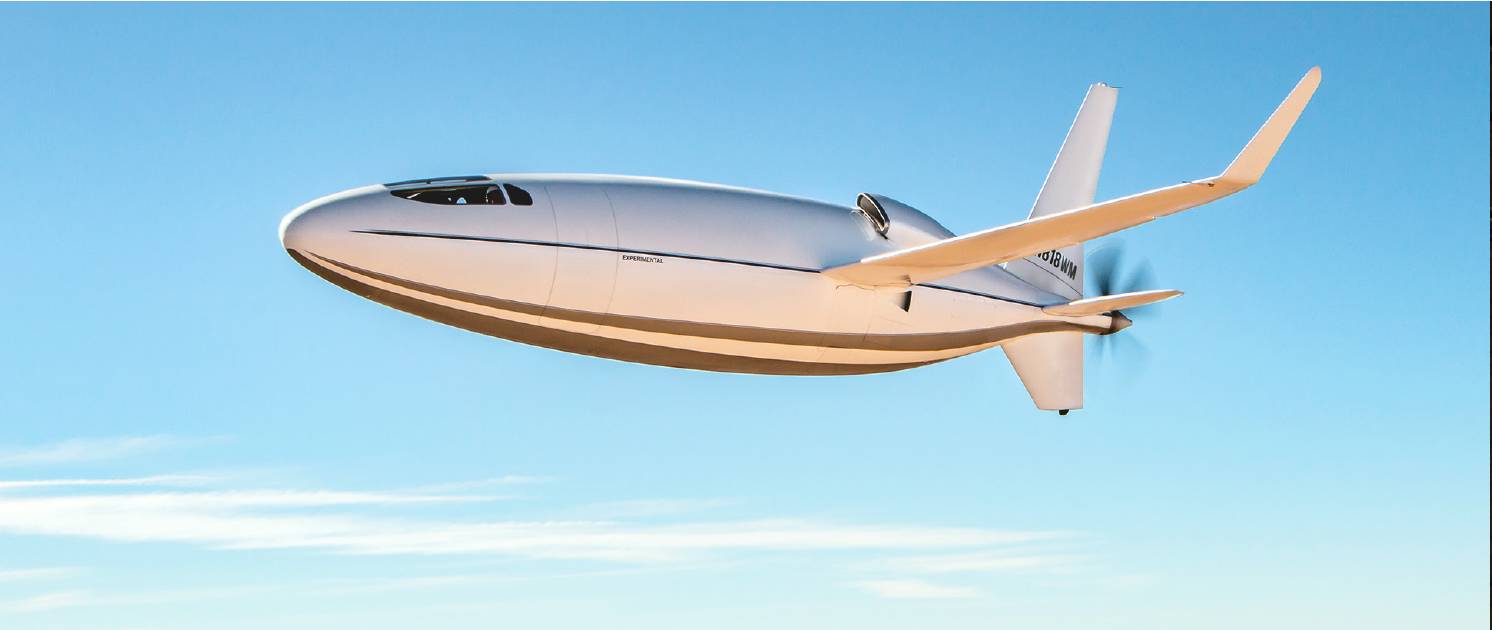 The prototype Celera 500L in flight.
The prototype Celera 500L in flight.
Have I not seen that shape somewhere before?
Aircraft experts have pointed out similarities between the Celera 500L and a British aircraft design called the Planet Satellite which was shown at the 1948 SBAC Farnborough Airshow. Built from magnesium alloy, the Planet Satellite had a similar prolate spheroid-shaped fuselage, rear-mounted pusher propeller and retractable undercarriage but had shorter wings and tail fins. However, the aircraft was not a success, as it was underpowered and was twice damaged while landing.
The shape of the Celera 500L is also reminiscent of the 2011 EADS Voltaire future concept electric aircraft. The Voltaire featured a similar fuselage and wing shape to the Celera 500L but was propelled by two rear-mounted coaxial, counter-rotating shrouded propellers, powered by lithium-air batteries.
Aerodynamic analysis
With such radical improvements in efficiency claimed, AEROSPACE asked aerodynamic experts, Prof Chris Atkin (Professor of Engineering and Head of Engineering, UEA, Past President RAeS), Kevin Hackett (Director Aeronautical Engineering at IHS Markit Engineering & Product Design), Doug Greenwell (Associate Director, HIS ESDU) and Prof Kenichi Rinoie (Department of Aeronautics and Astronautics, University of Tokyo), for their opinions. Their conclusion was that a 59% drag reduction for the Celera 500, compared to a similar-sized conventional aircraft, would be quite a hard task to achieve and not necessary to deliver the stated glide performance.
Attributing such a drag reduction to laminar flow was unrealistic: ‘for a drag-optimised aircraft, for which drag is divided equally between friction-induced ‘profile’ drag, which will be reduced by laminar flow, and lift-induced drag, which will not. A 59% profile drag reduction would be a good result for a two-dimensional aerofoil with zero lift-induced drag; once the lift-induced component is taken into account the overall drag reduction is much lower, although the analysis is complicated by the change in optimum lift coefficient and hence operating condition.
CONSIDERING FLY-BY-WIRE FLIGHT CONTROLS AS PART OF A ROADMAP TO AUTONOMY FOR FREIGHT AND MILITARY APPLICATIONS
There are further considerations: first, the impossibility in achieving comparable friction reduction across the more complex wing-fuselage-tail configuration; second, the realities of productionising the aircraft, with the cost of high-tolerance joints (especially under load), here including the currently absent cabin windows; third, the clawback from in-service degradation (FOD damage to the fuselage underside, given how low-slung it is on the ground, springs to mind). All of these will reduce the laminar flow benefit further.’ They added:
‘A more telling specification is a glide ratio better than 1:22, suggesting a lift:drag ratio (L/D) typical of current airliners, far better than most current GA aircraft but far lower than most gliders. Equally important to profile drag, here, is the aspect ratio of the wing. If the Celera 500 has a high aspect ratio – which appears to be the case – then L/D of 22 should be within its reach, without needing sensational profile drag reductions.’
However, the experts agreed that the 460mph max cruise speed claimed for the Celera 500 was achievable, commenting that: ‘This is comparable to speeds achieved by other propeller-driven aircraft. However, these are ‘maximum’ speeds, not ‘cruise’ speeds. Cruise speeds for props are lower than for jets because of the engine characteristics – jets cruise at ~ max ML/D, props at ~ max L/D.’ The 4,500nm range was also possible: ‘but this can be achieved through fuel capacity as well as performance.’
 A chart from Otto Aviation comparing performance and costs between the Celera 500L and an equivalent business jet.
A chart from Otto Aviation comparing performance and costs between the Celera 500L and an equivalent business jet.
Regarding Otto’s claim that the aircraft has eight times lower fuel consumption (18-25mpg) compared to 2-3mpg for a comparable jet aircraft, the experts were of the opinion that: ‘In the absence of a specified payload, cruise speed and altitude, it is difficult to comment. A factor of eight reduction in fuel burn would require, crudely speaking, a doubling of the aerodynamic efficiency of the airframe, a halving of specific fuel consumption of the powerplant and a halving of the aircraft weight, all at the same time. The most likely way to achieve this would be to compare against a heavy jet aircraft operating a considerable way off its design point.’
Commenting on the design in general, the aerodynamic experts said: ‘Designs which push laminar flow to the limit tend to suffer from compromises in handling qualities or structural efficiency. Laminar flow is highly susceptible to separation: ‘turbulators’ on glider wings are there for precisely this reason. Another consideration is that, because of the susceptibility to surface degradation described above, laminar flow tends not to be totally reliable in service. An attractive benefit from guaranteed drag reduction would be the freedom to carry less fuel for a given range, reducing the all-up weight and therefore the empty (structural) weight of the aircraft. However, if the drag benefit cannot be certified, then this opportunity is denied to the designer.
Another certification challenge will arise from the placing of the propulsor and the stabilisers in the wake of the laminar flow fuselage; these will have to operate effectively under both laminar and turbulent flow conditions, the latter quite likely asymmetric if the loss of laminar flow is localised, which is most probable. Associated stability and control issues could be a problem during take-off, landing, climb and descent when you are flying through conditions, such as rain, for example, which could change the flow resulting in lower stall speeds, possible wing drop, etc. All of these factors tend to push designers away from aggressive use of laminar flow, at least with the present level of understanding of the flow physics.
Pusher aircraft can be quite noisy if the propeller cuts through the wakes from the aerodynamic surfaces and the engine exhaust. The landing gear arrangement allows for little rotation at take-off and landing and the nose gear loads could be considerable in the case of a heavy landing.’
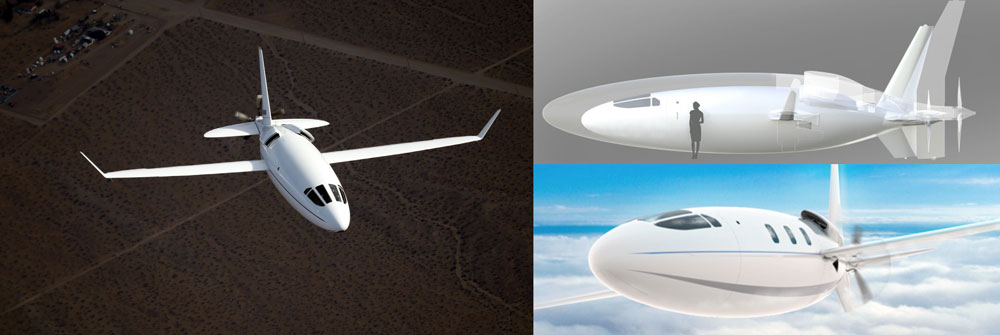 Right top: A comparison of the present Celera 500L, with the larger Celera 1000L design. Right bottom: Concept art of a passenger-carrying version of the Celera 500L, fitted with cabin windows.
Right top: A comparison of the present Celera 500L, with the larger Celera 1000L design. Right bottom: Concept art of a passenger-carrying version of the Celera 500L, fitted with cabin windows.
Multiple markets
If the step changes in efficiency claimed by the new aircraft design are proved to be achievable in actual operations, then the Celera 500L could be a competitive contender in a number of different markets. Otto Aviation is already thinking ahead and proposing the Celera 500L for a variety of passenger, cargo and military roles. One of the markets in which the company thinks the aircraft has potential is for air taxi services. The Celera 500L is small enough to take off and land at regional and municipal airports which means that it could operate to destinations unavailable to larger aircraft.Otto Aviation is confident that the Celera 500L’s long-range capabilities would also enable new operations which were previously only possible using narrowbody aircraft, saying that: ‘The Celera 500L is designed for transcontinental range with operating costs equal to or better than commercial airline ticket pricing on a per passenger basis.’ Otto also believes that the low operating costs of the Celera 500L will make it of interest to premium-class passengers who previously relied on commercial aviation. Another potential market that Otto is predicting is that individuals and families will be able to charter the Celera 500L at ‘prices comparable to commercial airfares but with the added convenience of private aviation’.
THE LOW OPERATING COSTS OF THE CELERA 500L WILL MAKE IT OF INTEREST TO PREMIUM-CLASS PASSENGERS WHO PREVIOUSLY RELIED ON COMMERCIAL AVIATION.
OTTO AVIATION
In addition, Otto is optimistic that the aircraft could be used as a cargo carrier to carry small volumes of high-value freight on point-to-point services. Capable of carrying D-sized cargo containers, the Celera 500L could carry small volumes of high-value cargo directly from point of manufacture to point of sale without the need to fly via traditional cargo hubs.
In addition, the Celera 500L could be of interest to the military to use for the transport of personnel or freight, as well as for ISR missions, operating to remote bases previously only served by larger aircraft. There is also the option for an uncrewed version, as the manufacturer believes that ‘its combination of range, speed, service ceiling and cost are unattainable by existing unmanned aerial vehicles (UAVs)’.
Economic advantage?
To succeed in these markets, the Celera 500L would have to show a strong economic advantage over other forms of transport. The air taxi and private charter market is not an easy sector to succeed in. In the 2000s, there was much hype over the potential of the very light jets revolutionising the air taxi market with many new aircraft designs under development but the business never took off. There was also talk of personal air vehicles opening up new markets for individual point-to-point travel but which also came to nothing. In more recent years, the short-range flight market has been focusing on the potential of eVTOL urban air mobility vehicles – a market that is still evolving.
As for the longer distance point-to-point market, the Celera 500L would also have to demonstrate radical cost and time-saving advantages over commercial flights and business jets.
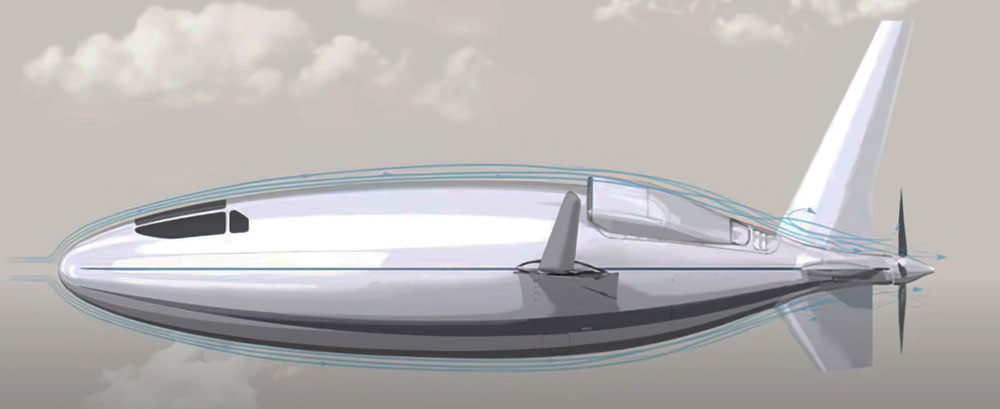 How the shape of the Celera 500L will maximise laminar flow.
How the shape of the Celera 500L will maximise laminar flow.
Progress report
However, Otto Aviation is rising to the challenge of proving the efficiency of its new design with flight certification planned for 2023, followed by entry into market in 2025.
The full-scale prototype has now achieved over 35 hours of flight test time, most of which have been spent validating performance at higher altitudes in clean flaps-up/gear-up configuration. Unfortunately, the onset of the Covid-19 pandemic has resulted in some delays to the schedule. “In March of last year our flight test centre was shut down due to Covid-19 stay-at-home orders,” admitted Otto. “Since there was uncertainty as to when these restrictions would be lifted, we made the decision to accelerate some planned modifications to the prototype, allowing us to fly to higher altitudes. Currently, flight tests are expected to resume in Q3 this year.”
The flight tests are to include a combination of physical prototypes and virtual testing. Bill Otto explains: “There will be four additional prototypes built for certification – two for flight testing, one for structural testing and one for systems integration. We have also relied on digital simulation quite a bit. Otto Aviation decided early on to build a flight simulator for the test pilots and this has proved invaluable for the flight test programme. The test pilots are able to simulate expanded envelope missions or tweaks to the configuration prior to actual flight and have confidence in the accuracy of these simulated predictions based off of the simulator’s historical accuracy.”
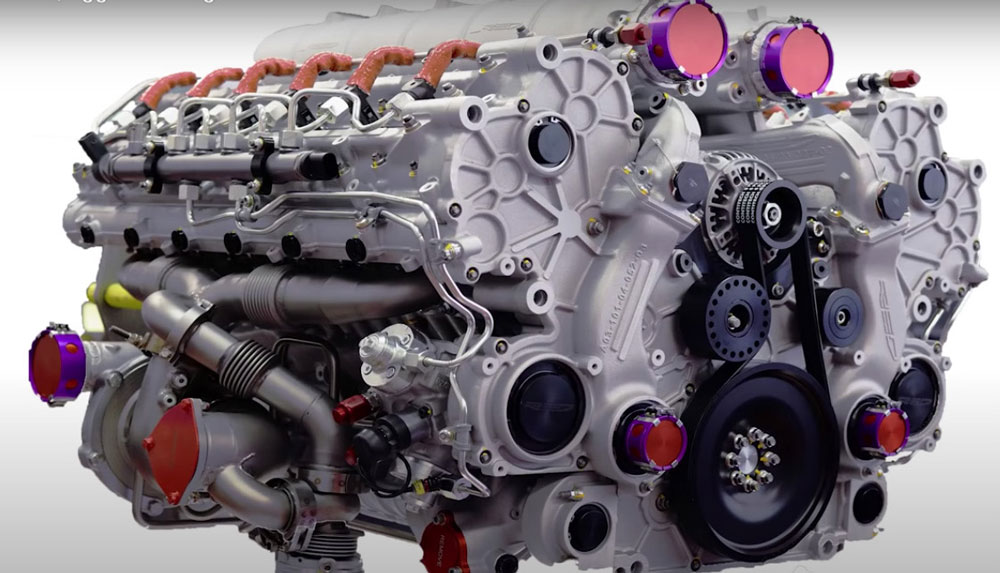 A Raikhlin Aircraft Engine RED A03. All images courtesy of Otto Aviation, except where stated.
A Raikhlin Aircraft Engine RED A03. All images courtesy of Otto Aviation, except where stated.
The production versions of the aircraft are also expected to differ from the prototype. “The current prototype was built as a proof of concept to demonstrate laminar flow and overall aircraft performance,” Otto told AEROSPACE. “The production version will incorporate several changes, including passenger windows.”
When asked what plans Otto Aviation had to create the infrastructure needed to build and support the series production versions of the Celera 500L, Otto stated that the manufacturing, spares, training and MRO of the aircraft will be the responsibility of the original company. “We intend to build and support the series production of the Celera 500L,” he stated. “Teaming with the best partners for the overall supply chain, maintenance and training will enable success.”
Reshaping the future
Looking further to the future, Otto Aviation sees potential for its new aircraft to be converted to hybrid or electrical propulsion where the laminar flow design would enable much longer ranges than current e-aircraft designs. Depending on the progress of battery technology, a zero-emissions version of the aircraft could be available by 2027. Autonomous unpiloted versions are also under consideration.
Otto also has plans for the Celera 1000L which will be 20% larger while still maintaining its laminar flow advantages. This larger design would have a cabin volume nearly double the size of the current configuration which could be used to carry more passengers or five D-sized shipping containers for air cargo.
So, is an egg-shaped propeller-powered aircraft the transport of the future? Watch the skies and see.
 The prototype Celera 500L in flight.
The prototype Celera 500L in flight.  Left: The unique shape of the Celera 500L fuselage will enable the inclusion of a wider cabin than equivalent-sized aircraft. Right top: The prototype Celera 500L on the ground. Right bottom: Déjà vu? The British Planet Satellite design at the 1948 Farnborough Airshow. Wikipedia
Left: The unique shape of the Celera 500L fuselage will enable the inclusion of a wider cabin than equivalent-sized aircraft. Right top: The prototype Celera 500L on the ground. Right bottom: Déjà vu? The British Planet Satellite design at the 1948 Farnborough Airshow. Wikipedia



